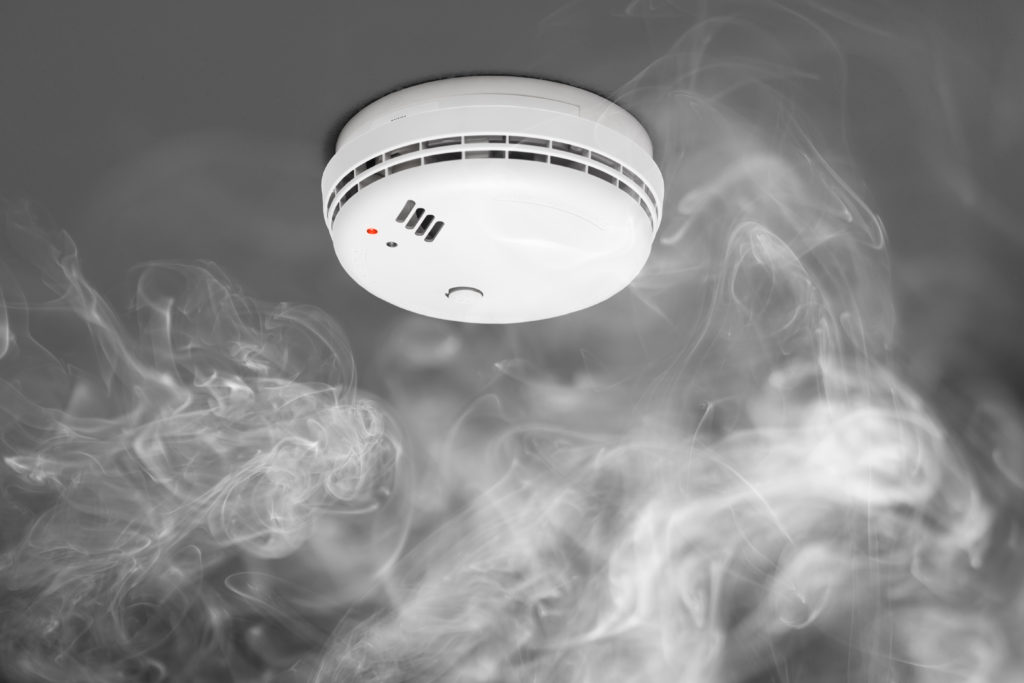If you own or rent a home in a managed, multiple-occupancy building such as a block of flats, it is crucial that you have clear, accurate and up-to-date information around fire risk assessments. The unforgettable, highly distressing images we all saw during the Grenfell Tower disaster of June 2017, and the revelations that have emerged since, have highlighted the importance of this issue, creating a heightened awareness and a sense of urgency.
While there is a shared responsibility between you and your landlord or property management company to ensure compliance with fire safety regulations, it is important to know what you should legally expect from them and from a risk assessment. This includes who is responsible, what a risk assessment should include and how often it should be performed.
Your right to fire safety standards
In addition to your landlord’s legal responsibilities, you have the right to have certain fire precautions put in place and maintained by them:
- Flat front doors, and doors on shared corridors and staircases, must be self-closing in order to prevent the spread of fire. They must not be held or wedged open.
- Items should not be stored in corridors or staircases as this can block escape routes.
- The evacuation plan must be displayed and communicated clearly to everyone who lives in the building.
Your landlord’s / Property Manager’s fire safety responsibilities
There are several legal requirements for landlords when it comes to fire safety, all of which are of equal importance.
The fire risk assessment. It is not adequate for the landlord or property manager to carry this out themselves – it should be performed by an independent professional fire risk assessor. It should not only record all fire safety measures in place but provide recommendations for additional measures. The risk assessment should:
- Identify the fire hazards and the people at risk
- Include steps to evaluate, remove or reduce the risks
- Record all findings and prepare an emergency plan
- Be reviewed and updated regularly
Maintenance of alarms and protection. Fire detection measures such as smoke alarms and (if necessary) carbon monoxide alarms must be provided and regularly tested, and all structural protection measures such as fire doors and escapes must be well-maintained.
The emergency evacuation plan. This must state both a detailed evacuation plan and an assembly point, and be displayed prominently at all times.
How often should the risk assessment be reviewed?
The law does not specify a time period for how often fire risk assessments should be reviewed, other than ‘regularly’. It must be reviewed immediately if:
- There is reason to believe it is no longer valid (for example, if there has been a fire)
- There have been significant structural changes to the building or an increase in the number of residents
Local Government Authority guidelines suggest that for buildings of up to three storeys and less than 20 years old, the assessment should be reviewed every two years and redone every four years.
For buildings higher than three storeys or more than 20 years old, it should be reviewed yearly and redone every three years.
What is a ‘stay put’ policy and has it changed?
The ‘stay put’ policy became headline news after the Grenfell disaster, with questions raised over why it failed to save lives and why fire chiefs did not abandon it sooner on the night. It is based on the idea that most residential flats are built to be self-contained units, sealed against fire, meaning that a fire in one flat should not spread easily to others. This makes your own flat the safest place to ‘stay put’ if there is a fire in the building and you are not directly affected.
The highly combustible external cladding that had been added to Grenfell Tower is believed to be what rendered the ‘stay put’ advice outdated in that particular instance. Because issues such as this affect only a relatively small number of buildings, the ‘stay put’ policy still applies to the vast majority of purpose-built residential flats in the UK. The National Fire Chiefs’ Council reiterated the ‘stay put’ advice in May 2018, 11 months after the Grenfell fire.
The most important thing you can do is check, and memorise, what your building’s policy and evacuation plan are. Know your means of escape and make sure that your smoke alarms are working. If you have any concerns or doubts whatsoever about the safety of your residence, contact your local fire service’s non-emergency department immediately for expert advice.

